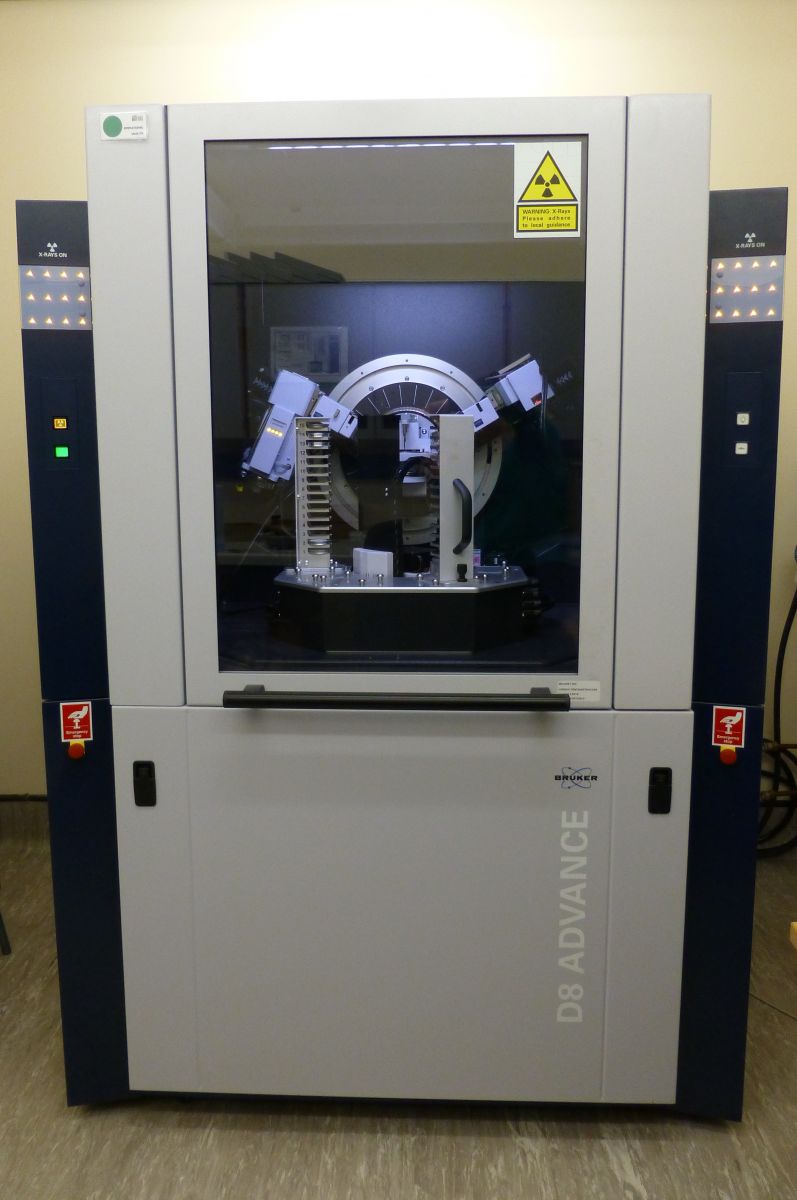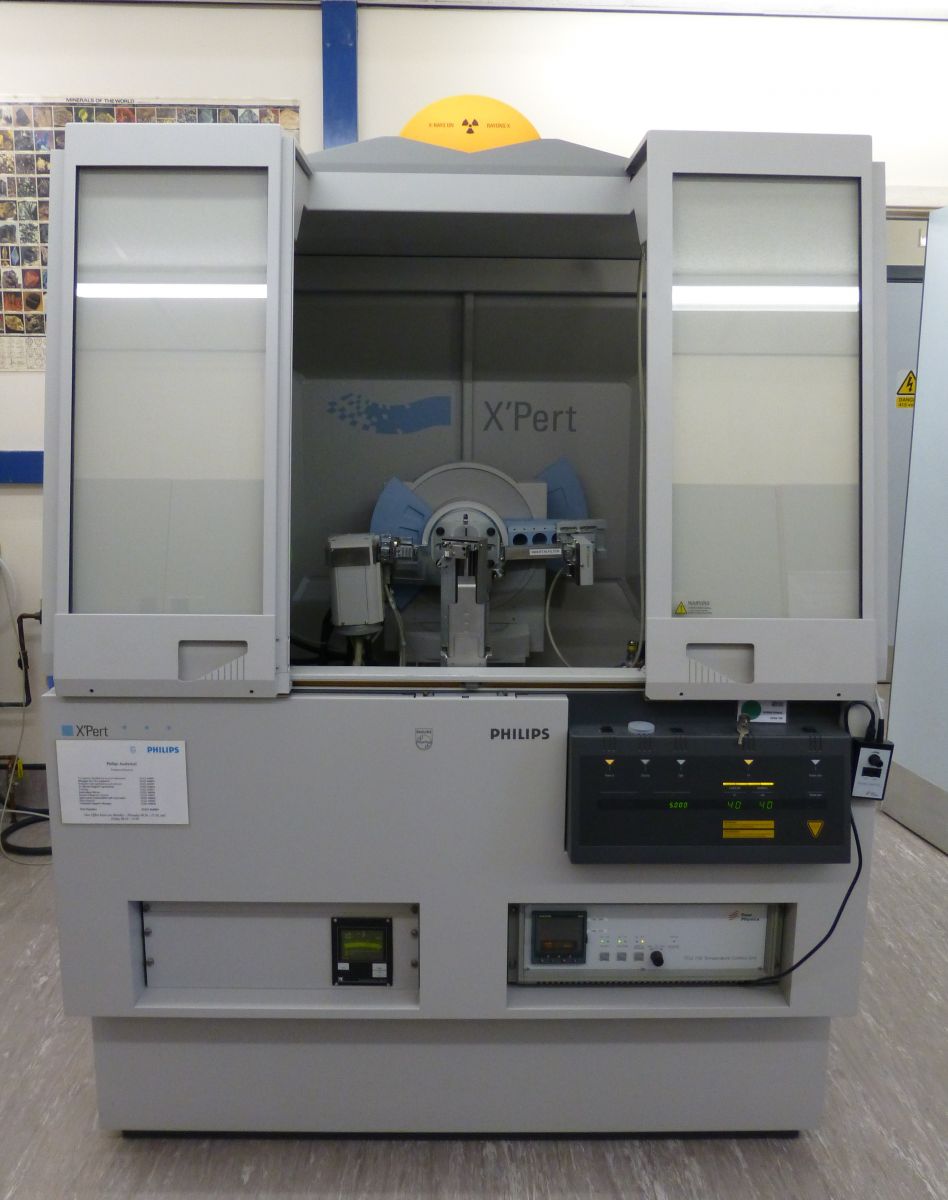Our X-ray diffraction lab has three diffractometers two D8 Advance diffractometers and a Panalytical X-pert Pro (centre). Each instrument has its own associated Bruker or Panalytical software.



The Bruker D8 Advance instruments both have a copper tube and are fitted with Lynx Eye XE position sensitive detectors enabling rapid data collection, or patient collection of high quality long count time data. In addition, they also have a sample changer system capable of taking up to 90 samples. The instruments are controlled by Bruker Diffrac software.
The Panalytical Xpert Pro diffractometer has a variety of interchangeable stages and optics. These include an Anton Par XRK 900 reaction chamber which is used for controlled humidity experiments and non-ambient diffraction at temperatures up to 900°C and a capillary stage that is used with an incident beam monochromator. This instrument is fitted with a copper X-ray tube and an X-celerator position sensitive detector.
The detectors on all three instruments are position sensitive detectors capable of very rapid data acquisition.
Once collected diffraction data may be processed and analysed using a variety of software, including Bruker's Diffrac Plus Eva and Panalytical's X-pert Highscore. In addition we have the latest versions of the International Centre for Diffraction (ICDD) databases, including the PDF-5+ database, that are used for identification of unknowns.
PowdR, Profex, Bruker's Topas program and Sietronics Siroquant, all of which can be used to make quantitative analyses of powder diffraction data, are also available.


